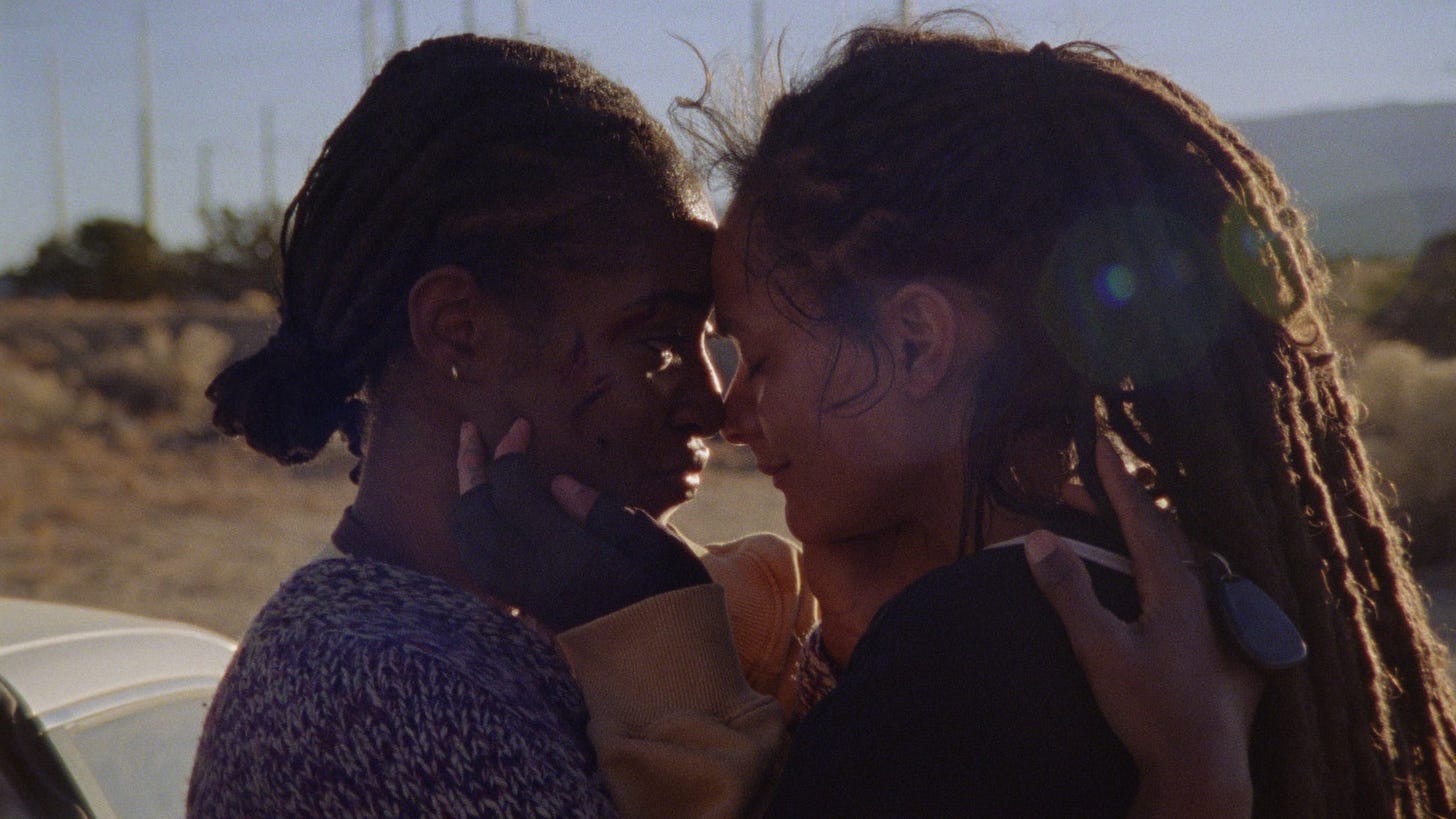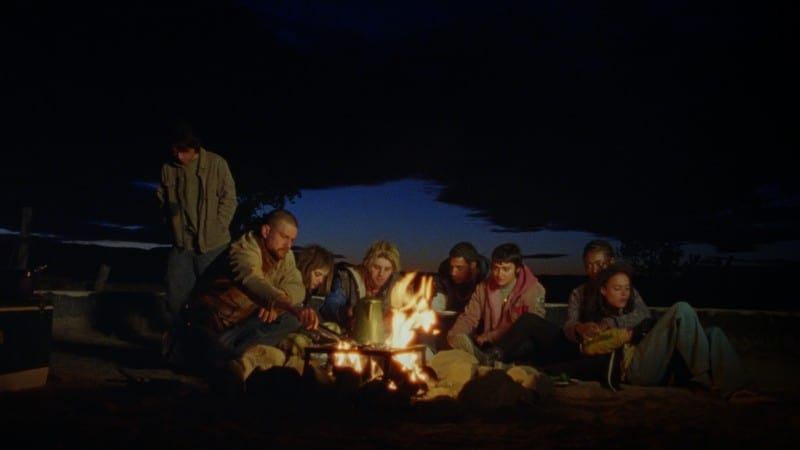How To Blow Up A Pipeline Is The Radical Climate Heist We Need
And it has a queer love story at its center
This is the Sunday Edition of Paging Dr. Lesbian. If you like this type of thing, subscribe, and share it with your friends. Upgrade your subscription for more, including weekly dispatches from the lesbian internet (which will also get you my monthly playlists). With a paid subscription, you would be supporting an independent journalist (me) at a time when the industry is doing…not well! I still have a special 60-day sale going on, so get it while it’s good.
The new film How To Blow Up A Pipeline is many things. It is a heist film, a tightly-wound thriller, a love story, a ghost story, and, perhaps most importantly, a climate story. Directed by Daniel Goldhaber and co-written by its star, Ariela Barer, the film is an adaptation of the non-fiction book of the same name by Andreas Malm. While the book lays out how sabotage can be a way forward in the fight for climate justice and criticizes pacifist movements, the film takes these arguments literally, imagining what would happen if large-scale sabotage were actually attempted.1
The film follows a group of young people who hatch a plan to bomb a pipeline in West Texas. Barer plays Xochitl, the group's ringleader of sorts. Xochitl and her best friend Theo (Sasha Lane) grew up in Long Beach under the looming shadow of an oil refinery that has had devastating effects on both of their lives. Also part of the crew are Rowan (Kristine Froseth) and Logan (Lukas Gage), two environmental activists from Portland, Xochitl’s former classmate, Shawn (Marcus Scribner), Michael (Forest Goodluck), an indigenous bomb-builder from North Dakota, Dwayne (Jake Weary), a west Texas farmer, and Alisha (Jayme Lawson), Theo’s devoted girlfriend.
Any conversation about the movie is bound to arrive at one question: how on earth did this film get made? It wasn’t easy. Goldhaber told Vulture that his agency, CAA, sent the film out to financiers but they weren’t able to book even a single pitch meeting. “No one would meet with us. We were told a couple of times straight up, like, ‘Our studio will never fund this. We are funded by oil,’” he noted in The Cut. Thankfully, the film was eventually funded by independent backers, and distributed by the independent company Neon. (Outside of the film industry, How To Blow Up A Pipeline has garnered controversy in other ways: the FBI and numerous other law enforcement agencies have issued warnings about the movie.)
Finances aside, the real story of the film’s production is one of collaboration. The project was brought to Goldhaber by his friend Jordan Sjol, an academic, but it wasn’t until Barer became involved that the film started taking shape. While Goldhaber had initially intended for the movie to be a straightforward propaganda film, Barer convinced him that it should have a more dramatic narrative, and the three wound up co-writing the script together. You may know the 24-year-old Barer from her roles in projects such as One Day at a Time and Runaways. She was initially hesitant to play the role of Xochitl, especially because she’s such a central character and Barer didn’t want to hog the spotlight, but Goldhaber was convincing.
Barer is also a producer on the film, as are several of the other actors and crew members. Rather than displaying the director’s name first, the credits begin with a “film by” section that lists the names of Barer, Goldhaber, Sjol, and the film’s editor, Daniel Garber. When it came time to cast the film, “from the beginning when we were coming up with characters, we knew that we wanted it to be us and our friends,” Barer told Slant. Theo was based on one of Barer’s real friends, and Forest Goodluck, who plays Michael, is from North Dakota and was able to bring his own experiences to the role. Goodluck is listed as an executive producer because, as Barer puts it, “he kind of creatively formed that whole leg of the shoot.”
How To Blow Up A Pipeline starts with a bang, no pun intended. We are thrown into the world of bomb-making with no preamble as our young heroes travel to their West Texas hideout. Bit by bit we begin to learn how each of the characters got to this place. Each member of the crew is given their own flashback sequence that illustrates their motivations. Instead of these flashbacks being linked together at the beginning of the film, these scenes are scattered throughout the “heist” itself, often intercutting moments of anxiety to increase tension. Goldhaber noted that this structure was inspired by Tarantino’s Reservoir Dogs, a film that follows a group of strangers who are hired to carry out a robbery. He also mentioned that one of the biggest inspirations for the film was Soderbergh’s Ocean’s 11, a film that’s all about the intricate, tense process of pulling off a caper.
Though How To Blow Up A Pipeline is more of a heist movie than it is a character drama, the characters, and their motivations, are much more deeply drawn than they are in an Ocean’s film. Theo has joined the movement because fossil fuels have made her sick and she has nothing left to lose, and Xochitl has lost a family member as a direct result of climate change. Michael and Dwayne are both fighting to protect their land from environmental destruction, and Alisha is mainly there to support Theo. Like Xochitl, Shawn has become fed up with incremental change, and Rowan and Logan are as committed to the cause as they are to each other.
Importantly, though Xochitl is the de-facto leader of the group, there is no charismatic hero that draws people to them on the basis of their charm. In fact, Barer worked to make sure Xochitl wasn’t too likable so that the movie would be more focused on the cause rather than the people carrying it out. “I thought that it would be borderline manipulative if people were coming into this because they were so charmed by a person versus so moved by the ideas,” Barer told The Cut. While she and her fellow actors do great work in the film, one of the things that makes it so successful is that it is simultaneously understated and also extremely tense. It is a movie about the human faces of the climate crisis, but the important takeaway here is that there is no one face that can represent everyone.
As I noted earlier, How To Blow Up A Pipeline is also a movie about love. The two couples in the film highlight how anger and activism can’t exist without love. Theo is understandably devastated when she learns of her diagnosis, and she’s even more upset when she realizes her proximity to fossil fuels is likely the reason she will die young. Theo accuses Alisha of not understanding her experience because she didn’t grow up in Long Beach, and she’s right. But Alisha eventually comes around to the plan, and though she remains the voice of skepticism in the group – at one point she questions the human cost of the rising oil prices they will undoubtedly generate – she proves that she’s willing to risk it all for love. Theo and Alisha’s unconditional devotion to one another is one of the most moving aspects of the film, and it reminds us both that climate change is not an abstract concept and that love should be a central force in our organizing.
The other couple in the group, Rowan and Logan, are not quite as wholesome as their sapphic counterparts, but they also play an important role in the group. As environmental activists and anarchists, the movement defines their lives and their relationship with each other. They are quite literally horny for eco-terrorism (and one another), which results in a rather passionate outdoor rendezvous just moments before the bombs go off. While Theo and Alisha embody the emotional, empathetic side of love, Rowan and Logan are all frenetic energy and passion, mirroring the propulsive movement of the film. But, ultimately, all of the characters are doing it for love: love for family, for land, for community, for the cause itself.
How To Blow Up A Pipeline is such a success because it’s not propaganda or a didactic story. But it’s not a flatteningly universal story either – instead, it reveals that the climate struggle is also a queer struggle, a class struggle, a racial struggle, an indigenous struggle. (There’s a reason why a queer black love story holds such a central place in the narrative.) While it is at times devastating to behold, the film braids together anger, and hope, and despair, and love, emphasizing that none of these conditions can exist without each other. There are no easy answers here, but that doesn’t mean there are no answers. In fact, there are many answers, and the film asks us to consider how we might forge our own way forward with the tools we each possess.2




